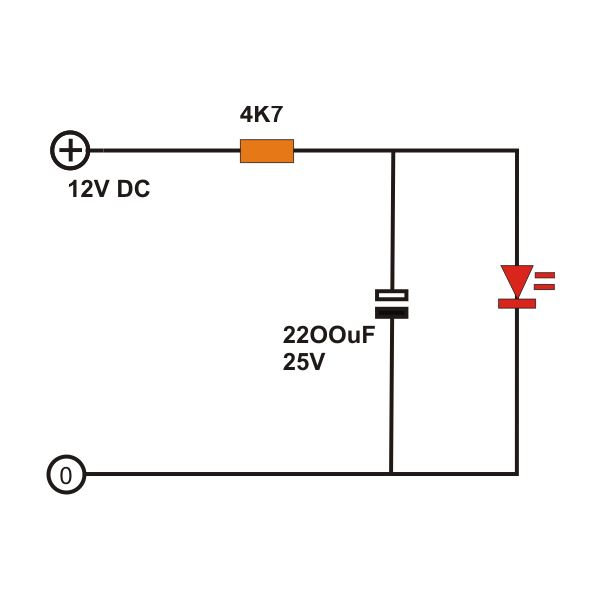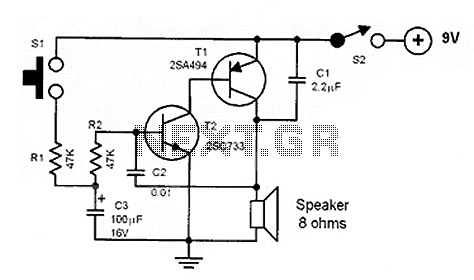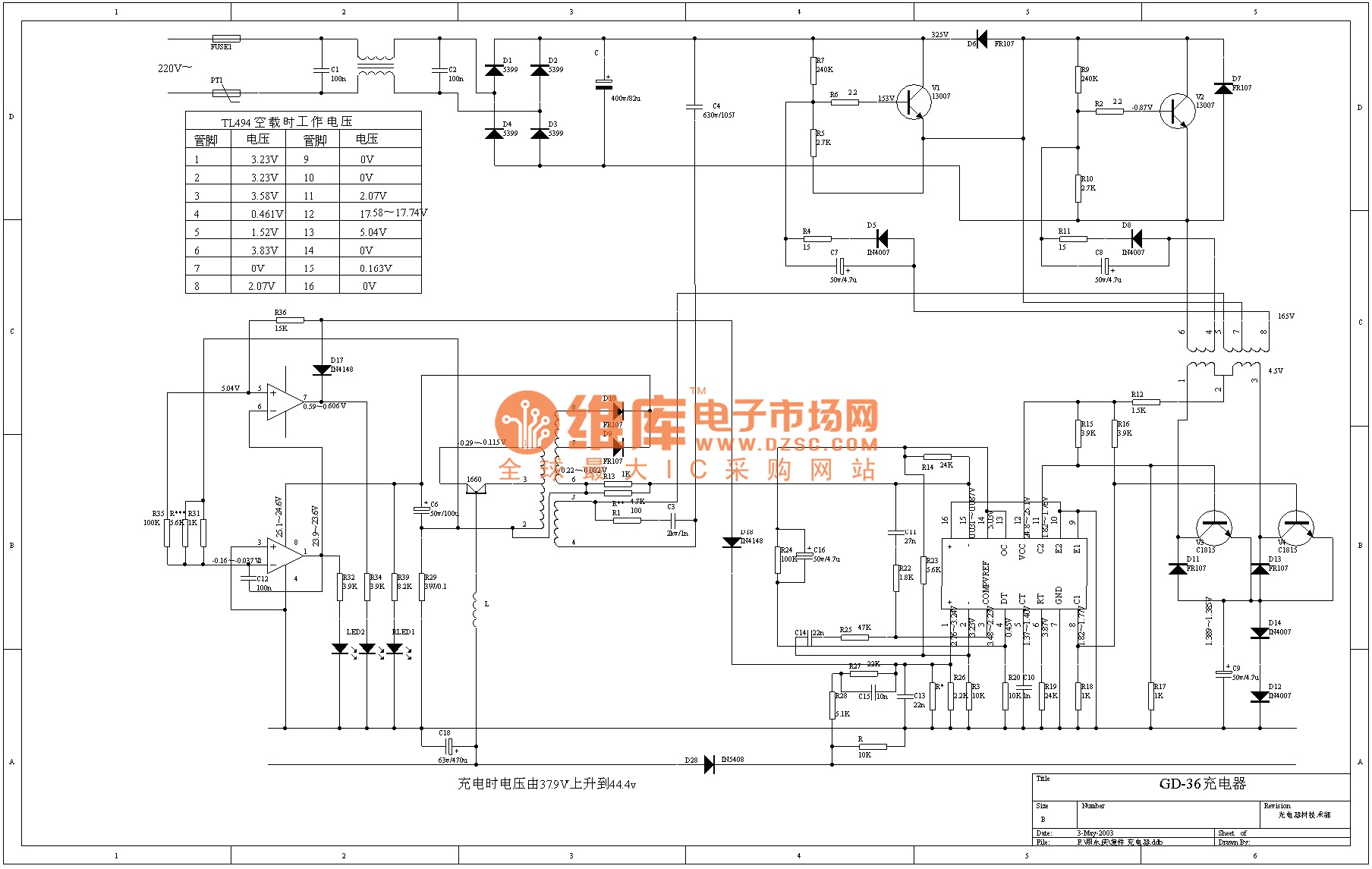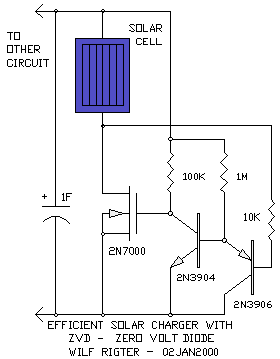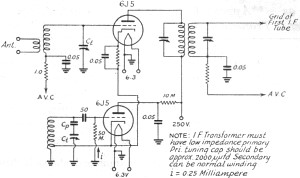
Semiconductors Lessons In Electric Circuits
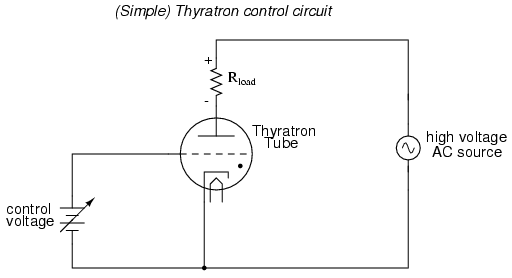
An often neglected area of study in modern electronics is that of tubes, more precisely known as vacuum tubes or electron tubes. Almost completely overshadowed by semiconductor, or "solid-state" components in most modern applications, tube technology once dominated electronic circuit design. In fact, the historical transition from "electric" to "electronic" circuits really began with tubes, for it was with tubes that we entered into a whole new realm of circuit function: a way of controlling the flow of electrons (current) in a circuit by means of another electric signal (in the case of most tubes, the controlling signal is a small voltage). The semiconductor counterpart to the tube, of course, is the transistor. Transistors perform much the same function as tubes: controlling the flow of electrons in a circuit by means of another flow of electrons in the case of the bipolar transistor, and controlling the flow of electrons by means of a voltage in the case of the field-effect transistor. In either case, a relatively small electric signal controls a relatively large electric current. This is the essence of the word "electronic," so as to distinguish it from "electric," which has more to do with how electron flow is regulated by Ohm's Law and the physical attributes of wire and components. Though tubes are now obsolete for all but a few specialized applications, they are still a worthy area of study. If nothing else, it is fascinating to explore "the way things used to be done" in order to better appreciate modern technology. Thomas Edison, that prolific American inventor, is often credited with the invention of the incandescent lamp. More accurately, it could be said that Edison was the man who perfected the incandescent lamp. Edison's successful design of 1879 was actually preceded by 77 years by the British scientist Sir Humphry Davy, who first demonstrated the principle of using electric current to heat a thin strip of metal (called a "filament") to the point of incandescence (glowing white hot). Edison was able to achieve his success by placing his filament (made of carbonized sewing thread) inside of a clear glass bulb from which the air had been forcibly removed. In this vacuum, the filament could glow at white-hot temperatures without being consumed by combustion. In the course of his experimentation (sometime around 1883), Edison placed a strip of metal inside of an evacuated (vacuum) glass bulb along with the filament. Between this metal strip and one of the filament connections, he attached a sensitive ammeter. What he found was that electrons would flow through the meter whenever the filament was hot, but ceased when the filament cooled down: The white-hot filament in Edison's lamp was liberating free electrons into the vacuum of the lamp, those electrons finding their way to the metal strip, through the galvanometer, and back to the filament. His curiosity piqued, Edison then connected a fairly high-voltage battery in the galvanometer circuit to aid the small current: Sure enough, the presence of the battery created a much larger current from the filament to the metal strip. However, when the battery was turned around, there was little to no current at all! In effect, what Edison had stumbled upon was a diode! Unfortunately, he saw no practical use for such a device and proceeded with further refinements in his lamp design. The one-way electron flow of this device (known as the Edison Effect) remained a curiosity until J. A. Fleming experimented with its use in 1895. Fleming marketed his device as a "valve," initiating a whole new area of study in electric circuits.
Vacuum tubes, or electron tubes, represent a significant chapter in the evolution of electronic components, serving as a foundational technology before the advent of solid-state devices. The principle of operation of vacuum tubes hinges on the controlled flow of electrons, which can be modulated by applying a small voltage to the control grid. This allows for the amplification and switching of signals, which is crucial in various applications such as audio amplification, radio transmission, and early computing.
The basic structure of a vacuum tube consists of a sealed glass envelope that houses a cathode, an anode, and, in many cases, a control grid. The cathode is heated to emit electrons, which then travel toward the positively charged anode. The control grid, placed between the cathode and anode, can influence the flow of electrons, effectively allowing the tube to amplify signals. The design and arrangement of these components dictate the tube's characteristics, such as gain, frequency response, and linearity.
The historical significance of vacuum tubes is further underscored by their role in the development of radio technology and early computers. For instance, the triode, which includes an additional electrode (the control grid), enabled more sophisticated signal manipulation and was pivotal in the development of early radio transmitters and receivers. The ability of tubes to handle high voltages and currents made them suitable for applications like audio amplifiers and oscillators.
Despite their eventual replacement by transistors, vacuum tubes continue to be utilized in specialized applications, including high-power RF transmitters, audio equipment, and certain types of scientific instruments. Their unique characteristics, such as the warm sound quality often preferred by audiophiles, ensure that they remain a topic of interest for both engineers and enthusiasts. The study of vacuum tubes not only offers insights into historical technology but also enhances the understanding of modern electronic principles and design.An often neglected area of study in modern electronics is that of tubes, more precisely known as vacuum tubes or electron tubes. Almost completely overshadowed by semiconductor, or "solid-state" components in most modern applications, tube technology once dominated electronic circuit design.
In fact, the historical transition from "electric" to "e lectronic" circuits really began with tubes, for it was with tubes that we entered into a whole new realm of circuit function: a way of controlling the flow of electrons (current) in a circuit by means of another electric signal (in the case of most tubes, the controlling signal is a small voltage). The semiconductor counterpart to the tube, of course, is the transistor. Transistors perform much the same function as tubes: controlling the flow of electrons in a circuit by means of another flow of electrons in the case of the bipolar transistor, and controlling the flow of electrons by means of a voltage in the case of the field-effect transistor.
In either case, a relatively small electric signal controls a relatively large electric current. This is the essence of the word "electronic, " so as to distinguish it from "electric, " which has more to do with how electron flow is regulated by Ohm`s Law and the physical attributes of wire and components. Though tubes are now obsolete for all but a few specialized applications, they are still a worthy area of study.
If nothing else, it is fascinating to explore "the way things used to be done" in order to better appreciate modern technology. Thomas Edison, that prolific American inventor, is often credited with the invention of the incandescent lamp.
More accurately, it could be said that Edison was the man who perfected the incandescent lamp. Edison`s successful design of 1879 was actually preceded by 77 years by the British scientist Sir Humphry Davy, who first demonstrated the principle of using electric current to heat a thin strip of metal (called a "filament") to the point of incandescence (glowing white hot). Edison was able to achieve his success by placing his filament (made of carbonized sewing thread) inside of a clear glass bulb from which the air had been forcibly removed.
In this vacuum, the filament could glow at white-hot temperatures without being consumed by combustion: In the course of his experimentation (sometime around 1883), Edison placed a strip of metal inside of an evacuated (vacuum) glass bulb along with the filament. Between this metal strip and one of the filament connections he attached a sensitive ammeter. What he found was that electrons would flow through the meter whenever the filament was hot, but ceased when the filament cooled down: The white-hot filament in Edison`s lamp was liberating free electrons into the vacuum of the lamp, those electrons finding their way to the metal strip, through the galvanometer, and back to the filament.
His curiosity piqued, Edison then connected a fairly high-voltage battery in the galvanometer circuit to aid the small current: Sure enough, the presence of the battery created a much larger current from the filament to the metal strip. However, when the battery was turned around, there was little to no current at all! In effect, what Edison had stumbled upon was a diode! Unfortunately, he saw no practical use for such a device and proceeded with further refinements in his lamp design.
The one-way electron flow of this device (known as the Edison Effect) remained a curiosity until J. A. Fleming experimented with its use in 1895. Fleming marketed his device as a "valve, " initiating a whole new area of study in electric circuits. Vacuum tube diodes - Fleming`the filament: De Forest called this metal screen betwement would tend to chok manner to the voltages applied.
In this partifier circuits, and bett 🔗 External reference
Vacuum tubes, or electron tubes, represent a significant chapter in the evolution of electronic components, serving as a foundational technology before the advent of solid-state devices. The principle of operation of vacuum tubes hinges on the controlled flow of electrons, which can be modulated by applying a small voltage to the control grid. This allows for the amplification and switching of signals, which is crucial in various applications such as audio amplification, radio transmission, and early computing.
The basic structure of a vacuum tube consists of a sealed glass envelope that houses a cathode, an anode, and, in many cases, a control grid. The cathode is heated to emit electrons, which then travel toward the positively charged anode. The control grid, placed between the cathode and anode, can influence the flow of electrons, effectively allowing the tube to amplify signals. The design and arrangement of these components dictate the tube's characteristics, such as gain, frequency response, and linearity.
The historical significance of vacuum tubes is further underscored by their role in the development of radio technology and early computers. For instance, the triode, which includes an additional electrode (the control grid), enabled more sophisticated signal manipulation and was pivotal in the development of early radio transmitters and receivers. The ability of tubes to handle high voltages and currents made them suitable for applications like audio amplifiers and oscillators.
Despite their eventual replacement by transistors, vacuum tubes continue to be utilized in specialized applications, including high-power RF transmitters, audio equipment, and certain types of scientific instruments. Their unique characteristics, such as the warm sound quality often preferred by audiophiles, ensure that they remain a topic of interest for both engineers and enthusiasts. The study of vacuum tubes not only offers insights into historical technology but also enhances the understanding of modern electronic principles and design.An often neglected area of study in modern electronics is that of tubes, more precisely known as vacuum tubes or electron tubes. Almost completely overshadowed by semiconductor, or "solid-state" components in most modern applications, tube technology once dominated electronic circuit design.
In fact, the historical transition from "electric" to "e lectronic" circuits really began with tubes, for it was with tubes that we entered into a whole new realm of circuit function: a way of controlling the flow of electrons (current) in a circuit by means of another electric signal (in the case of most tubes, the controlling signal is a small voltage). The semiconductor counterpart to the tube, of course, is the transistor. Transistors perform much the same function as tubes: controlling the flow of electrons in a circuit by means of another flow of electrons in the case of the bipolar transistor, and controlling the flow of electrons by means of a voltage in the case of the field-effect transistor.
In either case, a relatively small electric signal controls a relatively large electric current. This is the essence of the word "electronic, " so as to distinguish it from "electric, " which has more to do with how electron flow is regulated by Ohm`s Law and the physical attributes of wire and components. Though tubes are now obsolete for all but a few specialized applications, they are still a worthy area of study.
If nothing else, it is fascinating to explore "the way things used to be done" in order to better appreciate modern technology. Thomas Edison, that prolific American inventor, is often credited with the invention of the incandescent lamp.
More accurately, it could be said that Edison was the man who perfected the incandescent lamp. Edison`s successful design of 1879 was actually preceded by 77 years by the British scientist Sir Humphry Davy, who first demonstrated the principle of using electric current to heat a thin strip of metal (called a "filament") to the point of incandescence (glowing white hot). Edison was able to achieve his success by placing his filament (made of carbonized sewing thread) inside of a clear glass bulb from which the air had been forcibly removed.
In this vacuum, the filament could glow at white-hot temperatures without being consumed by combustion: In the course of his experimentation (sometime around 1883), Edison placed a strip of metal inside of an evacuated (vacuum) glass bulb along with the filament. Between this metal strip and one of the filament connections he attached a sensitive ammeter. What he found was that electrons would flow through the meter whenever the filament was hot, but ceased when the filament cooled down: The white-hot filament in Edison`s lamp was liberating free electrons into the vacuum of the lamp, those electrons finding their way to the metal strip, through the galvanometer, and back to the filament.
His curiosity piqued, Edison then connected a fairly high-voltage battery in the galvanometer circuit to aid the small current: Sure enough, the presence of the battery created a much larger current from the filament to the metal strip. However, when the battery was turned around, there was little to no current at all! In effect, what Edison had stumbled upon was a diode! Unfortunately, he saw no practical use for such a device and proceeded with further refinements in his lamp design.
The one-way electron flow of this device (known as the Edison Effect) remained a curiosity until J. A. Fleming experimented with its use in 1895. Fleming marketed his device as a "valve, " initiating a whole new area of study in electric circuits. Vacuum tube diodes - Fleming`the filament: De Forest called this metal screen betwement would tend to chok manner to the voltages applied.
In this partifier circuits, and bett 🔗 External reference
